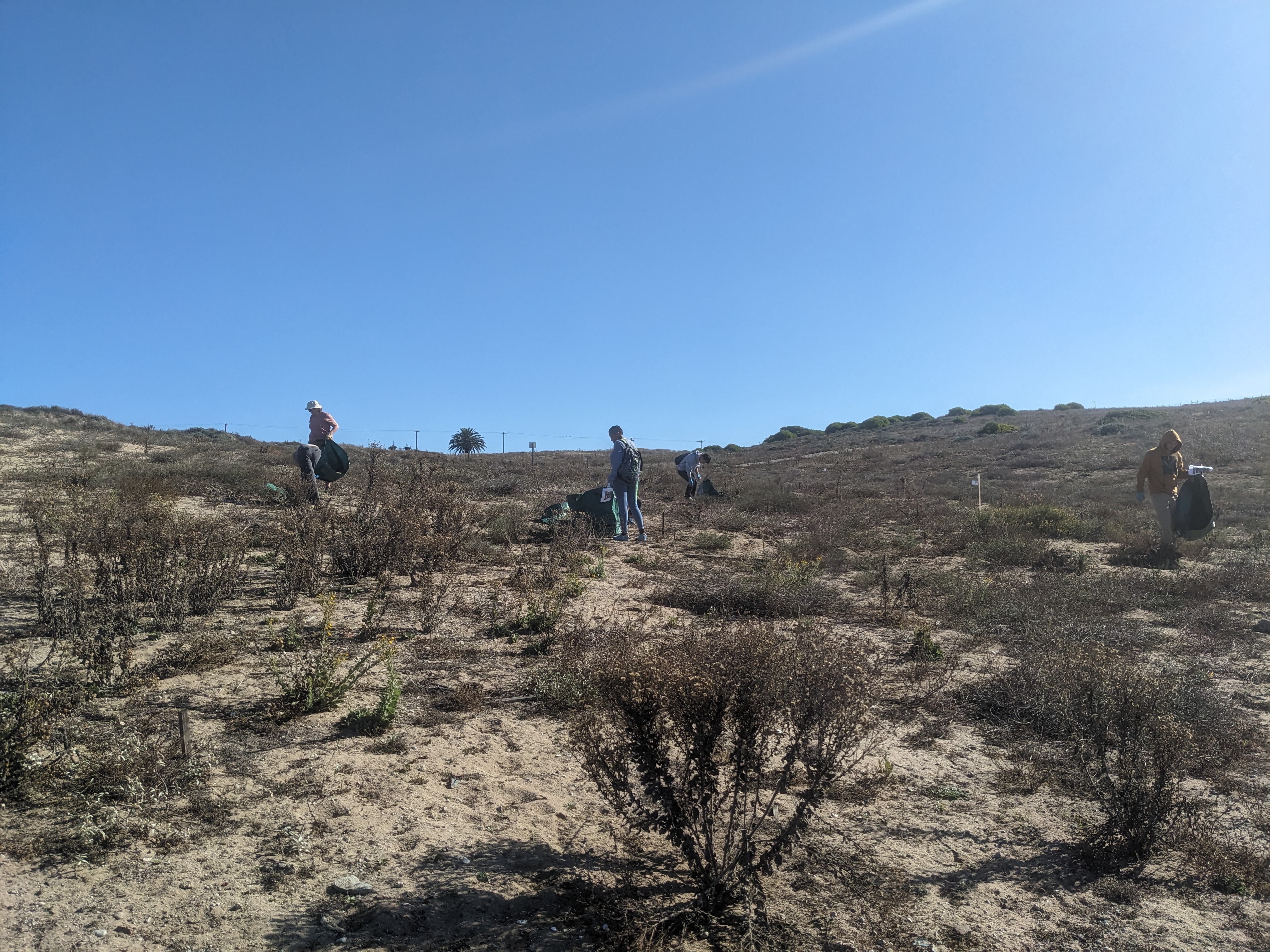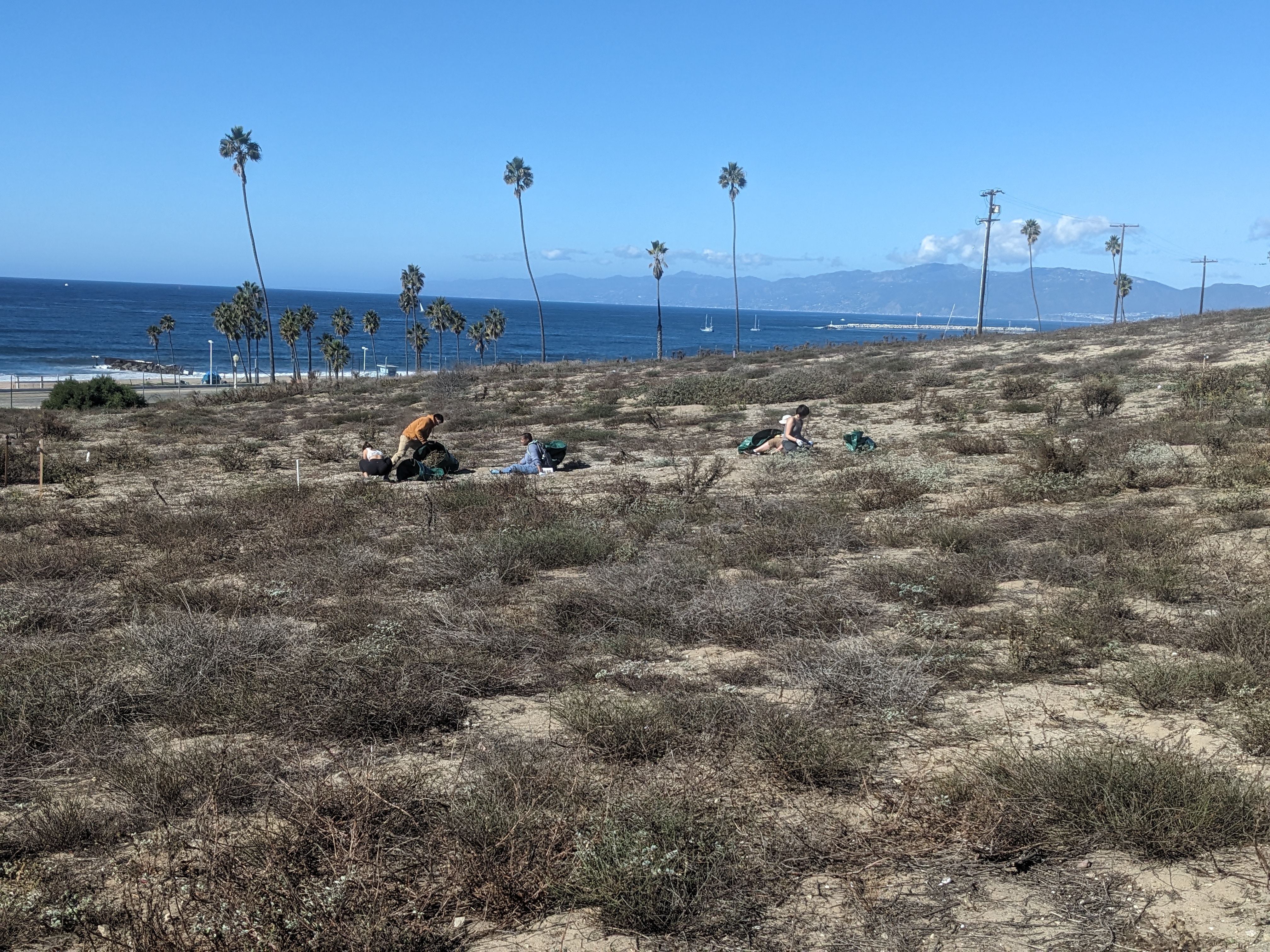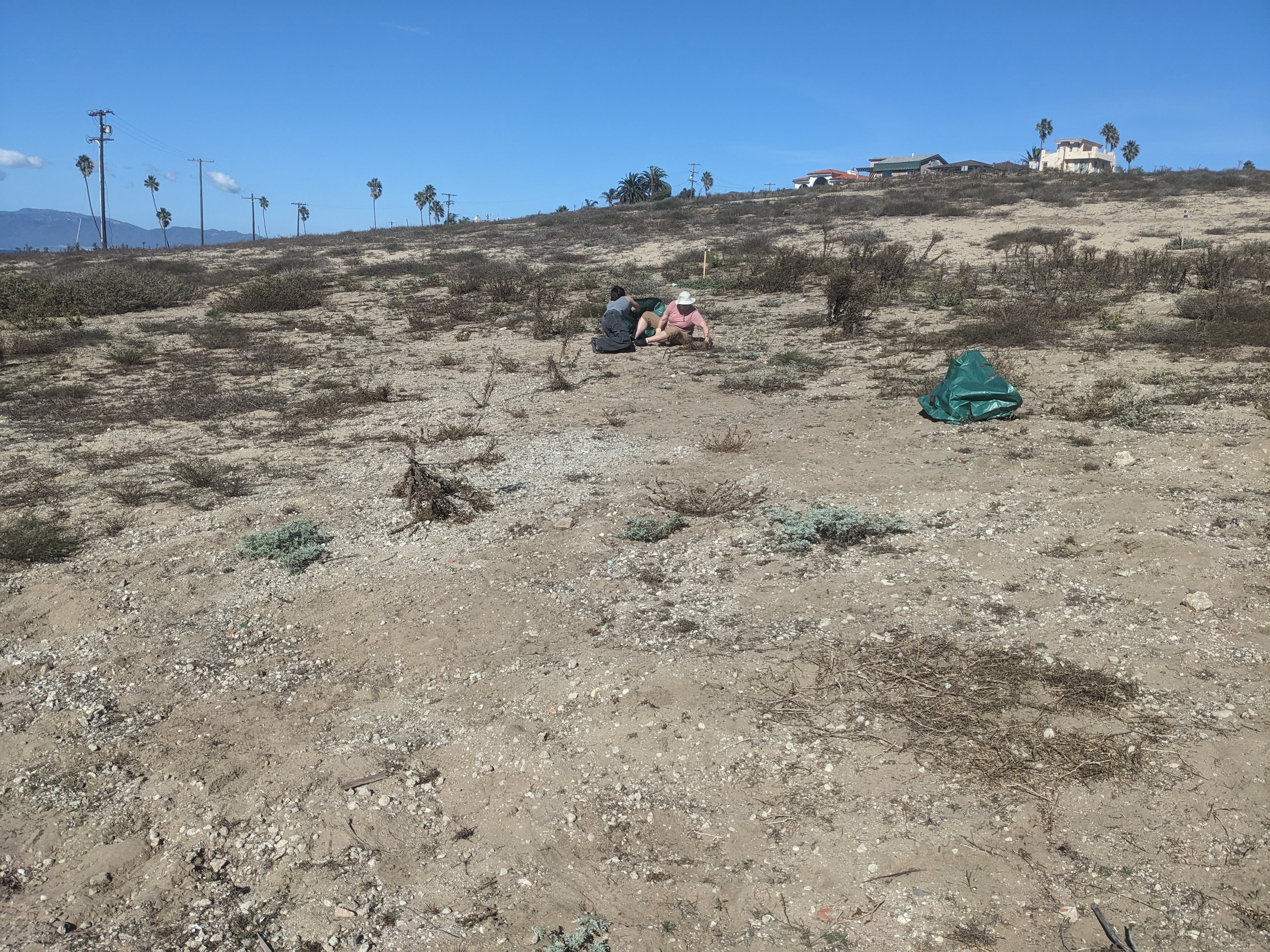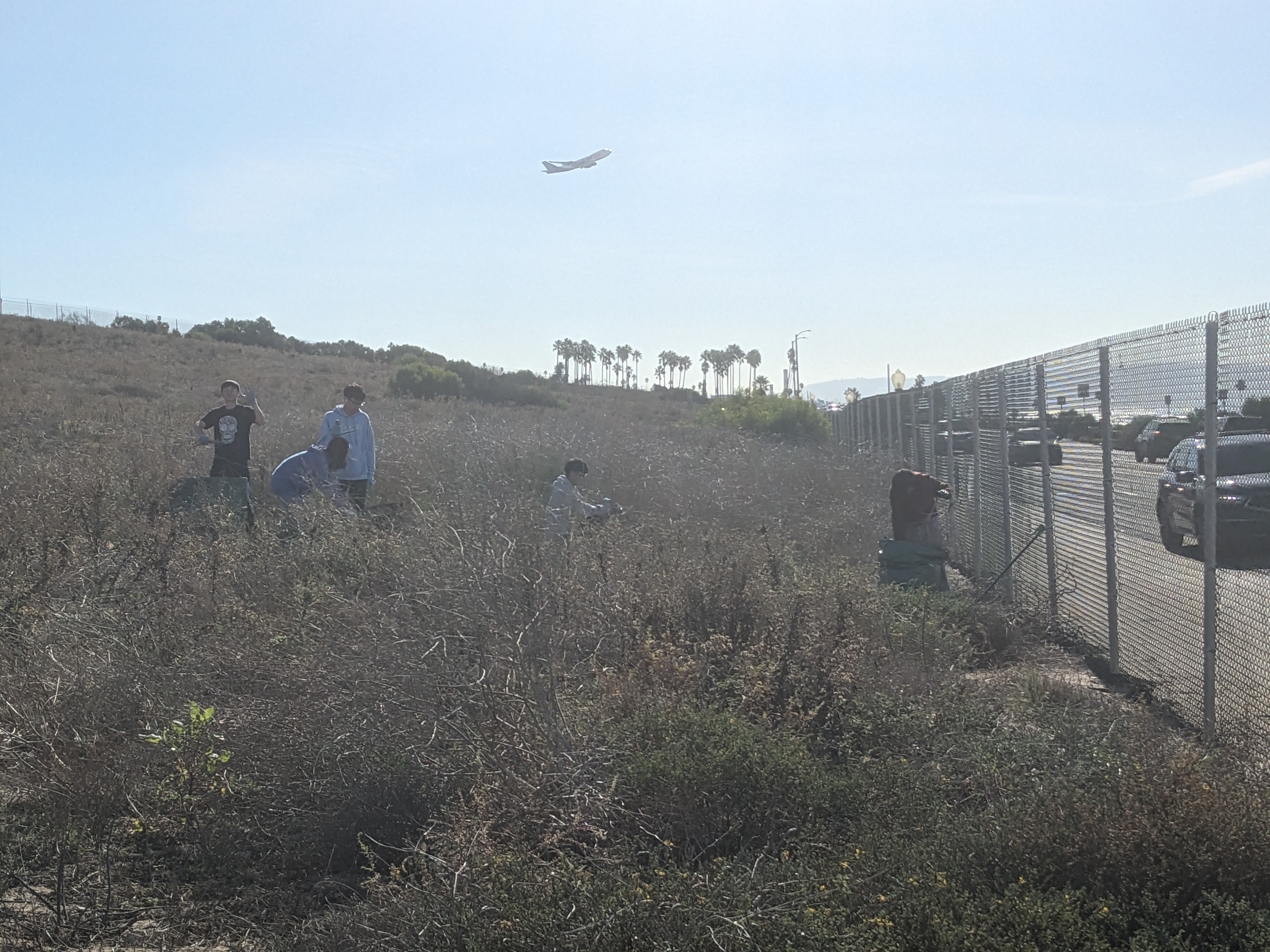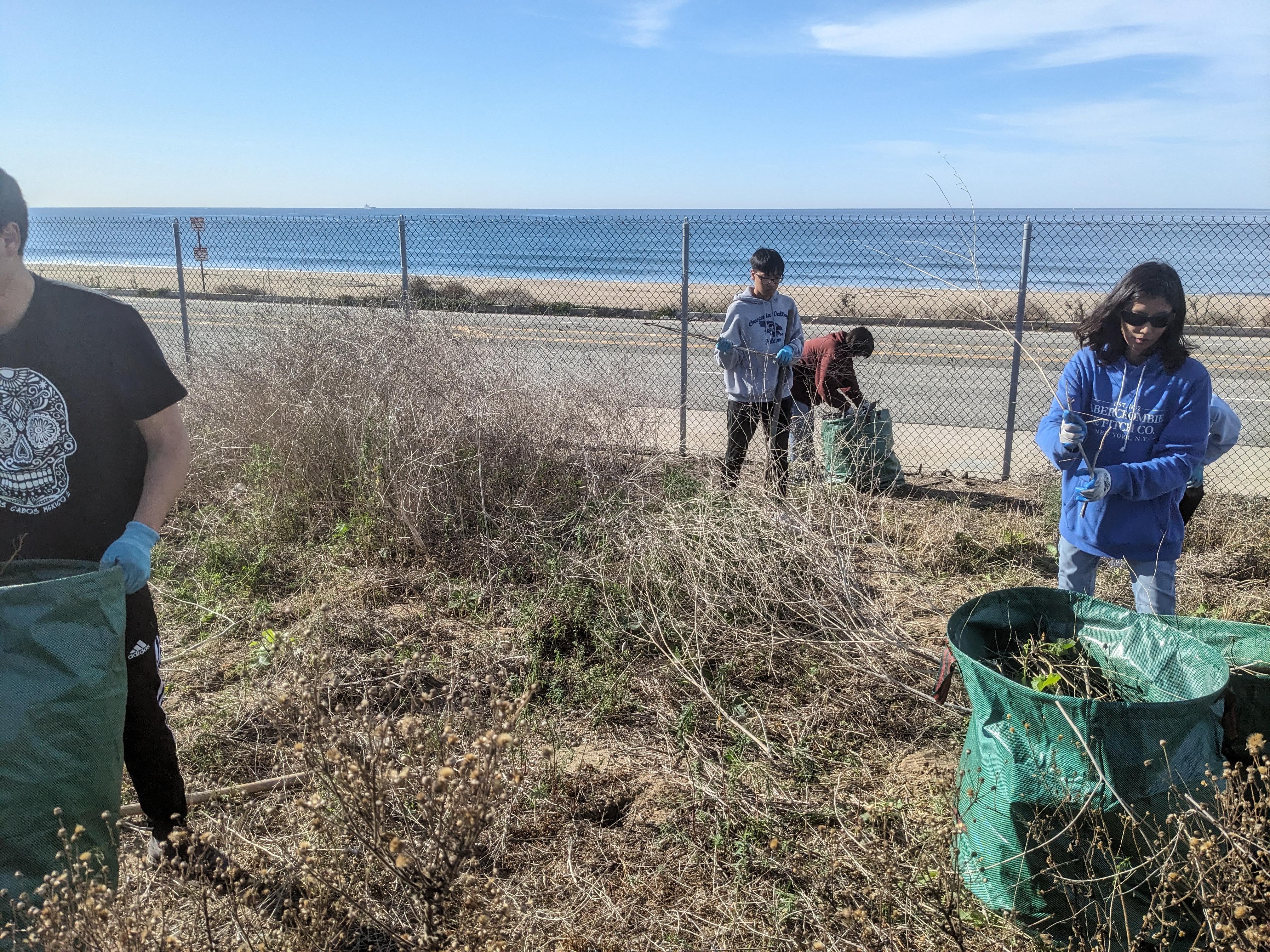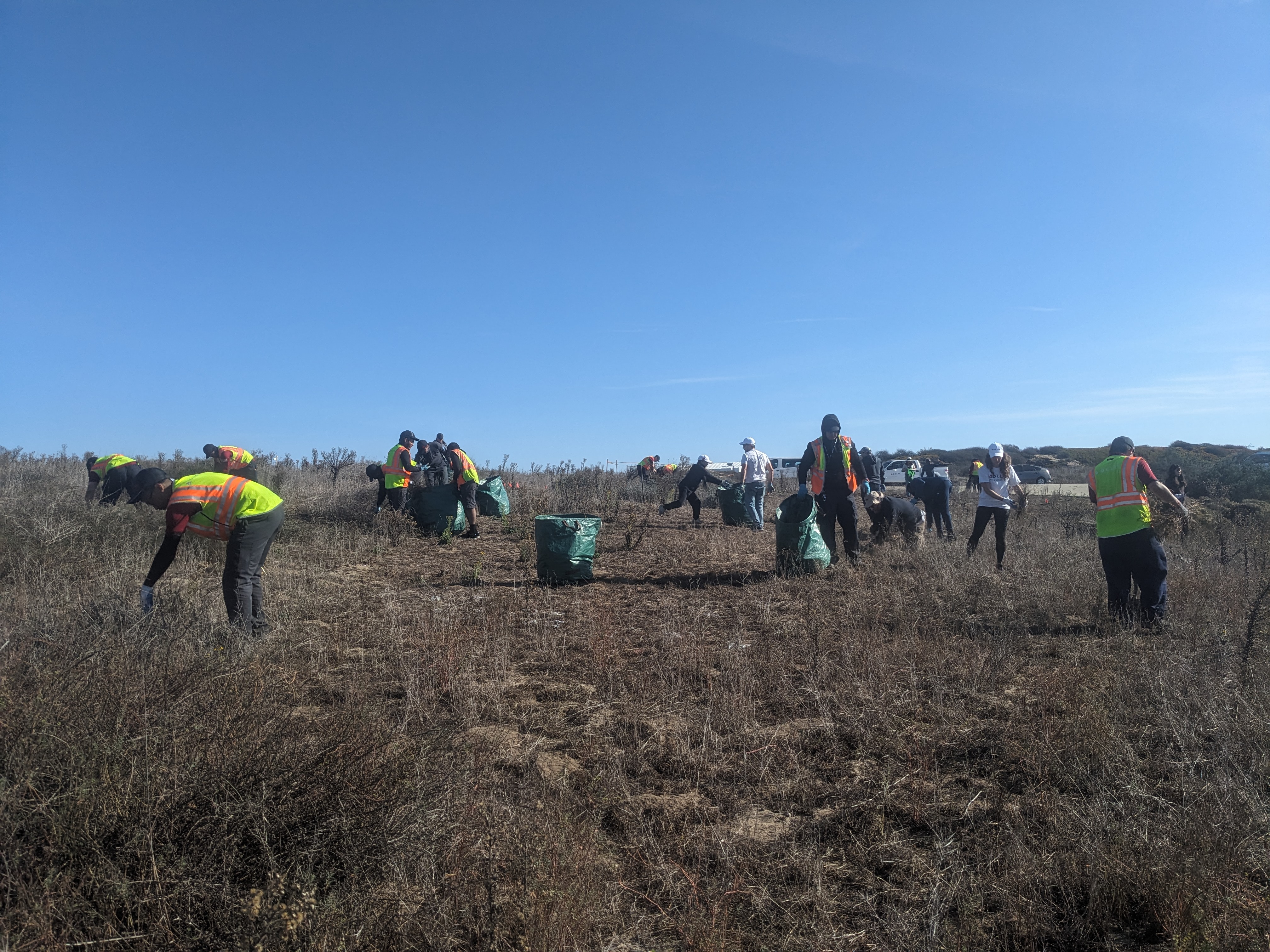
Natural Resources Management
Environmental Stewardship
Protection of the environment and conservation of natural resources.
In the 1980’s, LAWA began restoring the LAX Dunes, which comprise of 307 acres of coastal sand dunes located on the western portion of the airport. The LAX Dunes are home to over 900 species of native flora and fauna, including the federally endangered El Segundo Blue Butterfly (ESBB), and sensitive species such as the Southern California Legless Lizard and San Diego Horned Lizard.
Our Story
Please click here to take a virtual tour of the LAX Dunes to learn more about its history and current projects led by LAWA.
Volunteer
Please join us for upcoming volunteer events to restore the LAX Dunes. You can register for an event by clicking on the link in the events calendar below. If you attend 3 volunteer events you can win a prize! This year's prizes are a choice between a canvas bag or a water bottle. A huge thank you to our volunteers who dedicate their time and energy to work on our projects. Their passion is infectious and inspiring, we are grateful to everyone who has been able to come out. We look forward to seeing you at the next volunteer events!


Events Calendar

